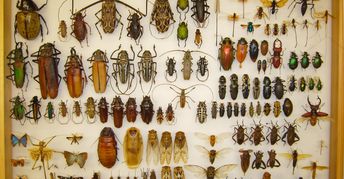🎵 Showcase your kid’s musical talent and win up to $1,000 in prize value!Enter Now
This class is no longer available, but we found something similar!
130
($65 value)

What's in a Name? Introduction to Scientific Classification Ages 8-11
Ages 8-11
Live Group Class
Live video meetings
1x per week, 4 weeks
1-8 learners per class
50 min
Overview

Live Group Class
Meet over live video meetings
4 live meetings
3 hrs 20 mins in-class hoursClass Experience
Taxonomy is the science and process of classifying and naming organisms. The course will integrate the use of natural history specimens and includes 2 modules. Module I: What's in a Name? 1. Defining binomial nomenclature. 2. An introduction to the history of scientific classification as developed by Carolus Linneaus. 3. Why do scientists use Latin? 4. How do scientists name life? Taking a look at some examples of interesting common and scientific names. 5. Create common names based on observations of natural history specimens. Homework : Create a scientific name for a new species based on provided Latin words. Upload your name and picture of your new species before the next class. Module II: Fun with Latin Words 1. Play the Name Game! Can you match the drawings with the correct Latin names? 2. The importance of taxonomy and conservation. We don't know what we're losing without knowing what we have! 3. QUIZ-What did you learn? BYO Collection! Students who are collectors will be encouraged to share their own natural history collections in the last class.
Other Details

Supply List
Hand-outs for homework will be uploaded on day of class. BYO collection! Students will be encouraged to share their own natural history collections in the last class.
Offered by
Teacher expertise and credentials
I have offered this course to the general public and students of all ages over the past 5 years as Education and Outreach coordinator at a university-based natural museum collection. The course is important in understanding how and why scientists classify, name, and collect specimens.Reviews
Are you planning to use state funding, such as an Education Savings Account (ESA), Micro-grant or scholarship to help pay for your learner’s education?
%20(12).png?height=124&width=124&quality=80&strip=true)